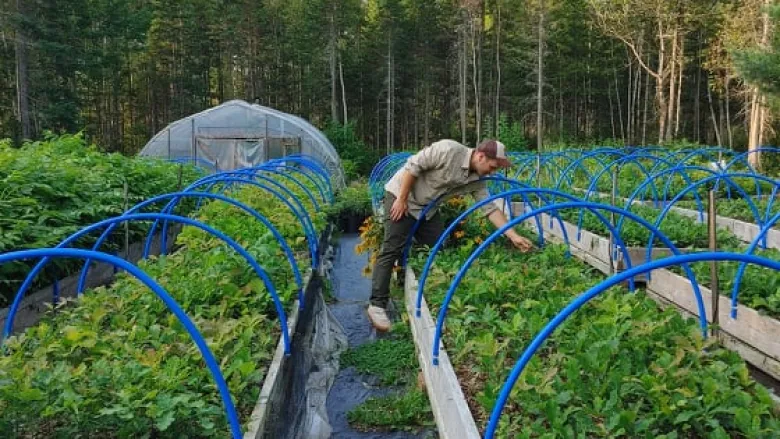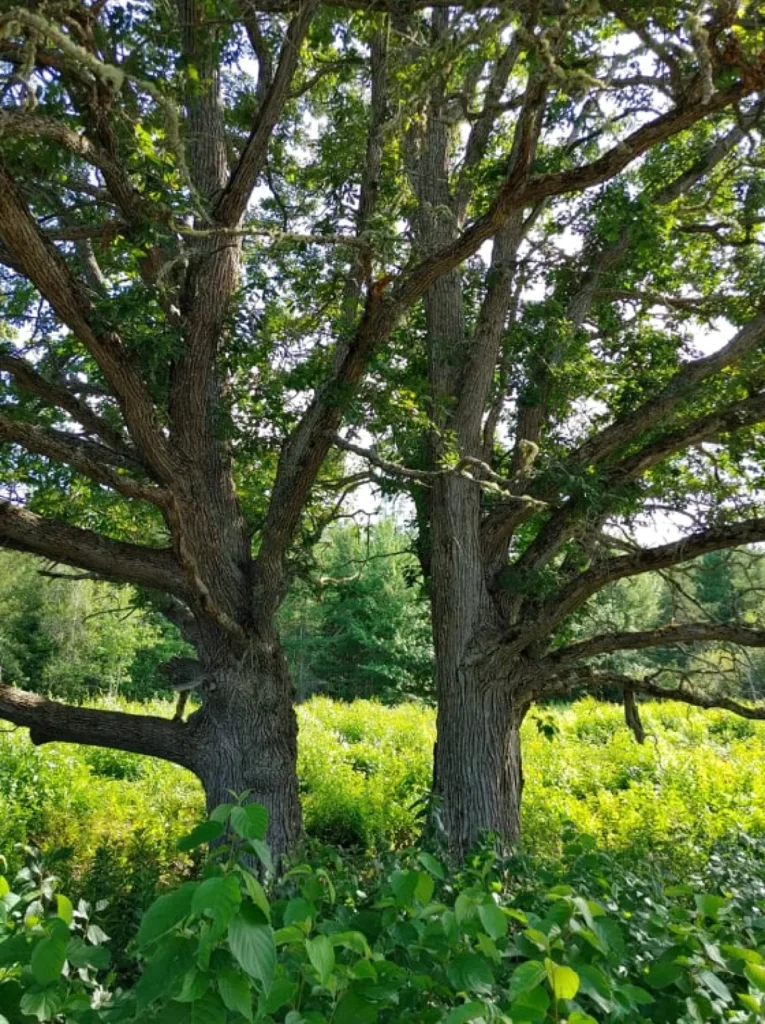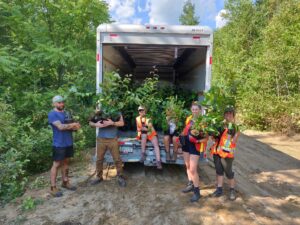Once plentiful, it now only grows in about one percent of its original range in New Brunswick.

Conservationists are working together to save one of the last old growth tree species on New Brunswick’s floodplain.
Bur oak is ecologically and culturally important in the province. Historically, it grows along the floodplain of the St. John River and its tributaries. Once plentiful, it now only grows in about one per cent of its original range in the province.
It was harvested to make oak barrels in the 18th and 19th centuries and has fallen victim to deforestation and agricultural development, according to Jesse Saindon.
Saindon is the owner and grower at Liberty Tree Nursery in Beaver Dam, outside of Fredericton and part of a group of conservationists working to recover the bur oak population.
“It provides habitat, food for wildlife as well as carbon sequestration and reduces the risk of erosion and flooding,” said Saindon.
For his part, Saindon has grown at least 2,000 bur oak seedlings at his nursery over the past three years. He gathers acorns in areas where bur oaks are doing well.
“There are some trees that I know of that I’ll go with a ladder and collect them early before the blue jays and squirrels and stuff get them…. If you time it well you can be there on the particular windy day or in the three days where they really start falling off the tree and you’re essentially just picking them off the ground everywhere you go.”
The Nashwaak Watershed Association buys many of the seedlings Saindon grows and has been busy planting them along the floodplain of the Nashwaak River.
Executive director Marieka Chaplin said, with the help of volunteers, the group has planted about 1,000 a year since 2016.
“That’s where we excel because we like to bring community members on board so that they also see the value of on-the-ground restoration. And they can see, you know, planting a tree, as we all know, has so many benefits.”
“And if you add on the fact that you are preventing extirpation of a significant tree, then it just makes that experience so much richer.”

Chaplin said the number of bur oak left in the province could fit within five square kilometres.
“Having bur oaks in the floodplain improves biological diversity and creates habitat for many other species… Currently the numbers are so low that the species actually faces extirpation from New Brunswick,” said Chaplin.
The plan for restoration is still being worked out with partners, such as Global Conservation Solutions, a consultancy that helps groups with conservation plans, said Chaplin.
“We’ve got a long way to go. And we do know that survivorship for this particular tree is low…. So I don’t think we can plant enough at this point in time. And so we’ll just keep on going.”
Check out the article from CBC News here: Conservationists work to save dwindling population of bur oak trees

